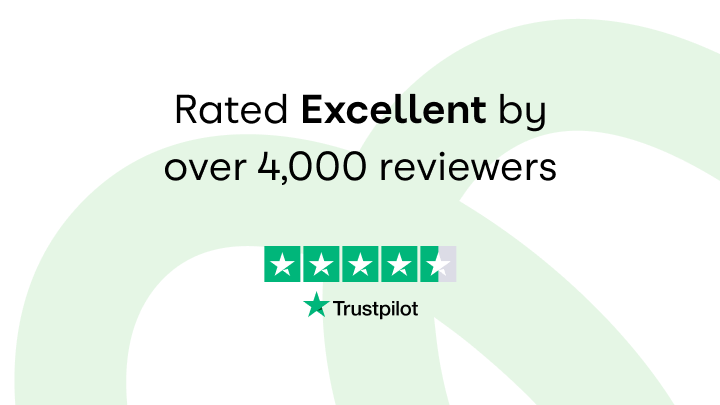Green mortgages reward people for buying an energy-efficient home or carrying out improvements to make their property more environmentally friendly.
With gas and electricity bills soaring, many people have become increasingly focused on how energy efficient their property is.
We take a look at how green mortgages work and the pros and cons of taking one out.
What are green mortgages?
There is no standard definition for a green mortgage, but generally they refer to mortgages that are taken out with a view to improving the environmental credentials of a home, or mortgages that are available on homes that already meet certain environmental standards.
In other words, the ‘green’ refers to the property on which the mortgage is taken out, not the mortgage itself.
Other than that, green mortgages work in the same way as standard mortgages: you borrow a certain amount and make monthly repayments typically over 25 years, with interest added to the amount you owe.
Save money with Mojo Mortgages
Allow award-winning Mojo to show you the best rates available to you. A whole-of-market broker, Mojo work with over 70 lenders. And they won't charge you a penny for their services.

Why were green mortgages introduced?
Green mortgages were introduced to encourage people to purchase energy-efficient homes or to improve the energy efficiency of an existing property.
This is important because the government is trying to reduce the country’s carbon emissions.
It has set the target for the UK to have net zero carbon emissions by 2050, and residential properties account for around a fifth of the country’s greenhouse gas emissions.
The energy efficiency of homes is graded through their energy performance certificate (EPC), under which A is the most energy efficient and G is the least energy efficient.
Around 60% of the UK’s homes have an EPC of D or below. But government research suggests that if all feasible energy efficiency improvements were carried out, 98% of homes would be rated A to C.
Green mortgages can help people finance these improvements.
Who can get a green mortgage?
In order to qualify for a green mortgage, you need to meet one of two criteria.
The first is that your home is already considered to be energy efficient, which in practice typically means it has an EPC of A or B.
The second is that you are planning to carry out home improvements that will increase the energy efficiency of your property.
These may include installing loft or cavity wall installation, putting in double glazing or replacing your heating system.
In some cases, lenders will stipulate that the improvements will need to increase the EPC on your home by a certain amount or to a certain level, typically to an EPC of A or B. In other cases, they may specify that a specific improvement needs to be carried out.
In addition to the above criteria, Barclays also offers green mortgages to people buying a new-build home direct from the builder or developer.
Mortgage calculator
Work out what your monthly mortgage payments could be with our mortgage calculator.
How much do green mortgages cost?
As with all mortgages, the interest rate charged on green mortgages varies according to the proportion of your home’s value that you are borrowing, and the type of mortgage you are taking out, such as a two-year fixed rate product or a five-year one.
As a general rule, they tend to be more expensive than if you scoured the market for the best deal available, but they are often cheaper than the comparable rate offered by the same lender.
For example, Barclays offers a two-year fixed rate green mortgage for someone borrowing 75% of their home’s value for 4.26% with no arrangement fees. The interest rate offered a non-green mortgage for the same customer would be 4.36%.
What are the pros and cons of green mortgages?
Green mortgages typically come with incentives, such as a discounted mortgage rate or cashback upon completion of the application or when energy efficiency improvements have been made.
The fact that they incentivise you to buy an energy-efficient home - or to carry out improvements to a home to make it more energy efficient - means you will also save money on gas and electricity bills.
But the deals can be more expensive than the best products available on the market.
It is also often difficult to shop around and compare different green mortgage products in the way you would if you were taking out a standard mortgage.
Furthermore, green mortgages tend to come with a lot of caveats, so it is important that you read the small print and understand exactly how they work and what you are committing to.
Which lenders offer green mortgages?
The availability of green mortgages is on the rise, with availability increasing from just three products to more than 50 in the past few years, according to the Green Finance Institute.
Big names that offer green mortgages include Nationwide, Barclays, Halifax, NatWest and Virgin Money.
There are also a number of smaller lenders in the sector, such as Kensington Building Society, Saffron Building Society, Swansea Building Society and Gatehouse Bank.
What’s the outlook for green mortgages?
Regulator the Financial Conduct Authority is predicting an increase in both the availability of green mortgages and innovation within the sector.
It points out that lenders’ targets for green lending are significantly higher than their current volumes, suggesting they will have to do more to encourage homeowners to opt for a green mortgage.
The government is also currently looking at ways to encourage lenders to have more energy-efficient properties on their books, with a proposal that homes on their existing mortgage portfolios should have an average EPC of C by 2030.
Other options being considered include setting new minimum EPC ratings for homes, which would create a new demand driver for green mortgages.
Either way, expect to see more lenders enter the green mortgage sector going forward, as well as more product innovation.

